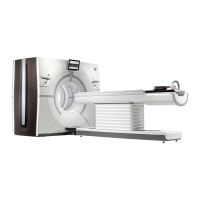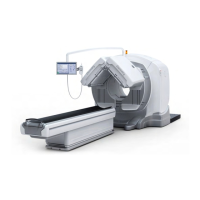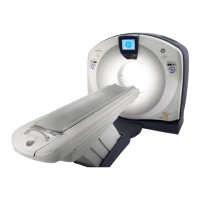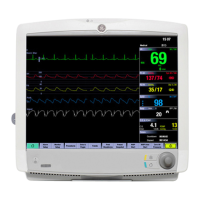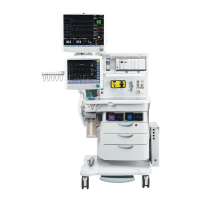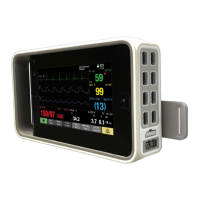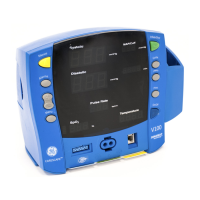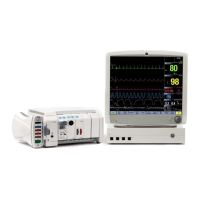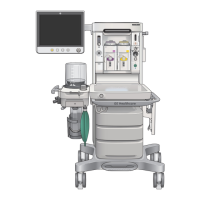GE MEDICAL SYSTEMS CT 9800 QUICK SYSTEM
Rev. 16 Direction 18000
8-7-2
Symptoms
The problem exists in a CT9800 HiLight/HTD system. The problem is image artifact streaks. Ten images are
taken with raw data. A streak appears in image five. After performing re-reconstruction of all ten images, a good
image five appears but a streak appears in a later image. For example, image seven contains a streak. No
problems appear when DGMON (RUNALL10.SQ) is run.
Troubleshooting Suggestions
1. If the DASIOP is not the problem and the DAS has been checked, the problem may be in the back-projector
board. Also try and vary the voltage on the AP when running diagnostics and recon. The ACU board can
cause image problems without diagnostic failures.
2. Try to reseat the SIP on the memory board.
3. Check the AP power supply for ripple on the output. No more than 50 to 70 mV of ripple should be present
during reconstruction.
4. Exchange the MMC (Main Memory Controller) in the ST-CT AP.
5. Star diagnostics cannot detect improper timing set ups. Check the timing with the timing box when swapping
pcb’s. When timing the boards, the MMC should be at +6ns and not +3ns.
7-4 Image Aliasing and ISO Alignment Errors
Symptoms
The ISO alignment sets the correct relationship between the tube focal spot, gantry center of rotation, and center
detector channel. When this relationship is set to the required accuracy, the optimum spatial sampling is
obtained. It is at this condition that maximum high contrast resolution and immunity to aliasing is obtained.
The problem with improper alignment of the ISO can increase the tendency for aliasing streaks off sharp edges.
This is most noticeable on bone edges when using high resolution recon algorithms: bone, detail or edge.
Aliasing streaks are thin streaks in an image that emanate in a line off a sharp transition in attenuation. They
may be connected to the object at the transition edge or may appear some distance from the object that caused
them. The aliasing effect is related to the accuracy of the spatial sampling of the high frequency signals present
in the anatomy.
The aliasing effect can be caused by one of two ISO symptoms which are explained below.
ISO Symptom 1:
A problem has occurred where a customer had severe streaking which had the appearance of aliasing, even
though the ISO alignment appeared to be within tolerance when checked.
It was found that the diameter of the pin being used for the ISO scan was 1/4” rather than the 1/8” pin called for
in the procedure. The result is that the number of detector channels shadowed by the pin is more than the AL
program is capable of calculating accurately. The program was reporting an inaccurate channel number, and in
this case caused the alignment to be in error by almost 20 times the spec of +/- .02
Because the HiLight cell spacing is 20% narrower than Xenon, there are 1.2X more detector channels shadowed
by the same pin. This is what makes the HiLight alignment program more sensitive to a pin that is too large.
This doesn’t mean that a 1/4” pin is OK for Xenon, it’s just not as bad.

